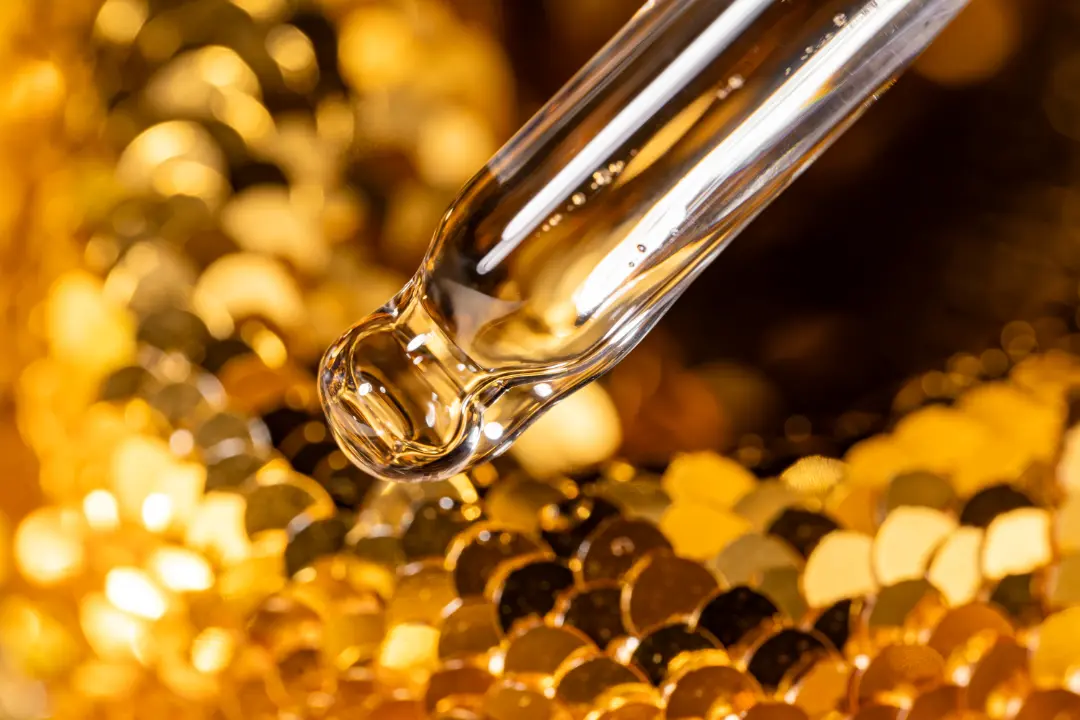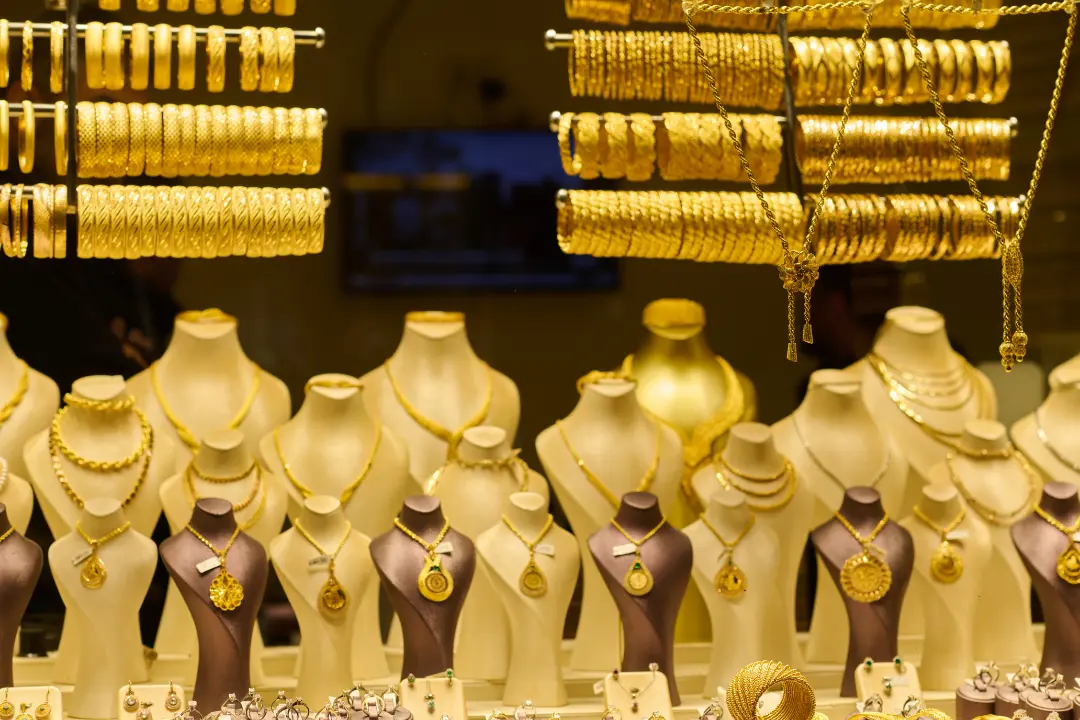How to See if Gold is Real at Home: Easy DIY Tests
Posted by Eddie R on Jun 29th 2025
Want to know how to see if gold is real at home? This guide covers simple tests you can use to check your gold’s authenticity.
With easy methods like visual inspections, physical tests, and chemical tests, you’ll find out if your gold is genuine without needing professional help.
Key Takeaways
- Authenticating gold before purchase is essential to prevent financial losses due to counterfeit products.
- Simple at-home tests, such as the magnifying glass examination, skin test, and float test, can provide initial insights into gold authenticity but should be complemented with professional methods for accuracy.
- When buying gold jewelry, always verify authenticity with a certificate, know the current market value, and inspect items closely to avoid counterfeits.
The Importance of Authenticating Gold
In a market flooded with counterfeit gold, confirming authentic gold is more crucial than ever. The high value of gold attracts counterfeiters, so buyers must verify authenticity before purchasing. This protects your investments and ensures you are not a victim of fraud.
Knowing how to test gold can prevent significant financial losses. Whether purchasing jewelry or investing in gold pieces, being informed about purity and authenticity enables confident financial decisions. The purer the gold, the higher its value, and verifying this can provide peace of mind.
Simple At-Home Tests for Gold Authenticity
At-home diy tests are a convenient way to verify gold authenticity, especially in a market where counterfeit gold is prevalent.
While these tests can provide valuable insights, they are not always 100% reliable and should be complemented with advanced testing techniques for the best results.
Magnifying Glass Examination
One of the simplest ways to test gold authenticity at home is by using a magnifying glass. Here’s how you can do it:
- Closely examine your gold piece.
- Look for hallmark stamps and markings that indicate authenticity.
- Use the magnifying glass to see tiny hallmarks clearly.
- If you find markings suggesting the item is gold-plated or made of a different metal, it is likely not real gold.
If there are doubts about the authenticity of a hallmark, consider using other tests to verify gold authenticity. A magnifying glass examination is a good starting point, but it should not be your sole method of determining if your gold is real.
Skin Test
The skin test is another simple method to test gold at home:
- Clean the area of your skin and ensure it’s free of makeup.
- Rub the gold item on your skin.
- Observe any changes, as real gold is non-reactive with the skin and should not cause any discoloration.
If your skin changes color when in contact with gold, it indicates the following:
- Green, blue, or black skin color suggests the presence of other metals, indicating the gold is fake.
- No discoloration suggests the gold is genuine.
- Any color change indicates the presence of alloy metals, confirming the gold is fake.
Makeup Test
The makeup test involves applying liquid foundation to your skin and rubbing the gold item over it. If a visible black mark appears on the foundation, it indicates the presence of real gold. This test leverages the non-reactive properties of genuine gold, which interacts with the makeup to leave a black streak.
If no black line appears, the item may be another metal or gold-plated. This simple test can quickly verify gold authenticity at home.
Physical Property Tests to Confirm Gold Authenticity
Physical property tests effectively verify gold authenticity at home. These include examining gold’s buoyancy, magnetic reaction, and comparing its weight and size to a known genuine piece.
Each test leverages gold’s unique physical properties to determine authenticity.
Float Test
The float test is straightforward. Since gold is dense, a real gold item will sink when placed in water. Fill a glass with water and gently drop the gold item in. If it sinks, it is likely real gold; if it floats or remains suspended, it may be fake.
Some fake gold pieces made from lighter metals might sink slowly, affecting the test’s reliability. Therefore, this test should be used alongside other methods to confirm authenticity.
Magnet Test
The magnet test exploits gold’s non-magnetic properties. Hold a strong magnet next to the gold item. If the gold sticks to the magnet, it is likely fake, as real gold is not magnetic.
If there is no magnetic reaction, the gold item is likely genuine. This simple yet effective test helps quickly identify whether your magnetic metal gold is real or fake.
Weight and Size Comparison
For the weight and size comparison test:
- Use a caliper to measure the gold item’s dimensions.
- Weigh the gold item with a digital scale.
- Compare these measurements to a known genuine piece of similar size.
Significant deviations from standard specifications may indicate fake gold. This test leverages gold’s high density and specific weight, which are hard to replicate in counterfeits.
Chemical Tests
Chemical tests reliably verify gold authenticity, typically involving acids to test the metal’s resistance and reaction. Handle with care due to the hazardous nature of the chemicals.

Vinegar Test
The vinegar test is simple and safe for testing gold authenticity. Soak the gold item in distilled white vinegar for 5-8 minutes. Genuine gold does not change color, while fake gold may darken or tarnish.
Real gold should not change color, smoke, or fizz when exposed to vinegar. This test quickly determines if your gold is real or fake.
Acid Test
Acid testing kits use different acid strengths for various karat weights in the karat system, providing accurate gold purity measurements. This method is highly reliable but should be handled with extreme caution.
The acid test is a definitive method to verify gold authenticity. Follow these steps:
- Use a non-reactive, acid-resistant mat or tray.
- Apply nitric acid to a scratch on the gold item.
- Observe the reaction: pure gold will resist the acid, while fake gold may turn green or milky.
For added accuracy, apply nitrohydrochloric acid if the initial mark remains unchanged. This further assesses gold’s purity. The acid test is dangerous, so follow safety precautions and store acid securely away from children and pets.
Scratch and Streak Tests
Scratch and streak tests determine gold authenticity based on the mark’s color. These tests include the ceramic plate test, the scratch test, and the black jeweler’s stone test, each providing unique insights.
Ceramic Plate Test
For the ceramic plate test, scratch the gold item on an unglazed ceramic plate. A golden or yellow streak indicates real gold, while a dark streak suggests it is fake. This test quickly differentiates between genuine and counterfeit gold.
Real gold leaves a shiny yellow streak on an unglazed ceramic tile, while fake gold typically leaves a black stripe. This test leverages the distinct streak color of real gold.
Black Jeweler's Stone Test
For the black stone test, rub the gold item on a black stone and apply nitric acid to the mark. If the mark remains unchanged, it indicates genuine gold. This test provides a solid gold-colored streak, suggesting authenticity.
This method, often used by a professional jeweler, is highly reliable for verifying gold testing and gold purity on the millésimal fineness scale.
Professional Testing Methods
For the most reliable verification of gold authenticity, professional testing methods like X-ray fluorescence (XRF) analysis and electronic gold testers are recommended. These provide highly accurate results.
X-ray Fluorescence (XRF) Analysis
XRF analysis, a non-destructive method, uses X-rays to excite atoms in the gold, identifying its composition. This technology provides precise readings without damaging the item, quickly identifying other metals.
The analysis process delivers rapid results, adding to its efficiency and making it a preferred method for professional jewelers.
Electronic Gold Testers
Electronic gold testers, like the Sigma Metalytics Precious Metals Verifier, provide precise measurements of gold purity through various technologies and specialized equipment. These testers measure resistivity using electromagnetic waves and offer non-destructive testing of gold coins and bars.
Ultrasonic testing and electronic conductivity measurement (ECM) are other reliable methods for verifying gold purity, providing accurate results without damaging the item.
Tips For Buying Gold Jewelry
When purchasing gold jewelry, consider the following to ensure authenticity and value:
- Verify the authenticity and value amidst widespread counterfeiting.
- Know the current market value to make informed decisions and avoid overpayment.
- Always request a certificate of authenticity with details like carat weight and significant information to validate the gold’s authenticity.
Inspect the gold before buying, avoid transactions without in-person verification, and be aware of any making or wastage charges. These precautions help avoid counterfeit gold and ensure value for your money.
While these tips can help you avoid buying fake gold, the best choice for gurateed 100% authenticity is to buy your gold jewelry from reputable stores like Harlem Bling.

Why Choose Harlem Bling for Your Gold Jewelry Needs
If you are serious about owning real gold, you need a jeweler you can trust. At Harlem Bling, we offer authentic, solid 10k and 14k gold jewelry.
Our solid gold pieces are crafted to meet the highest standards of durability and shine. Whether you're after a bold Cuban link chain, a refined Figaro bracelet, or a sleek everyday ring, every item we offer is stamped for authenticity and designed to last a lifetime. Unlike plated or gold-filled jewelry that fades or tarnishes over time, our solid gold holds its value, maintains its luster, and feels as premium as it looks.
Thousands trust Harlem Bling because we deliver what we promise: real gold, fair pricing, and unbeatable craftsmanship. So if you're learning how to tell if gold is real, make it simple: shop where you know it’s always legit.
Our excellent customer support, fast shipping, and easy returns make purchasing gold jewelry a hassle-free experience. Explore our gold jewelry collection today.
Frequently Asked Questions
How can I perform a simple test to check if gold is real at home?
To check if gold is real at home, you can use tests such as examining it with a magnifying glass for markings, performing a skin test to see if it causes any reactions, or conducting a float test to see if it sinks in water. These methods can give you initial insights into the authenticity of your gold.
What should I look for when examining gold with a magnifying glass?
When examining gold with a magnifying glass, prioritize finding hallmark stamps and markings that confirm its authenticity; any indications of gold-plating suggest it is not genuine gold.
How does the vinegar test work to verify gold authenticity?
The vinegar test effectively verifies gold authenticity by soaking the item in distilled white vinegar for 5-8 minutes; genuine gold will remain unchanged, while fake gold may darken or tarnish. This simple test can help you confidently assess your gold's authenticity.
What are the benefits of using professional testing methods for gold?
Utilizing professional testing methods, such as X-ray fluorescence (XRF) analysis and electronic gold testers, ensures highly accurate and non-destructive verification of gold authenticity. These methods offer peace of mind and confidence in your investment.
Why should I choose Harlem Bling to purchase gold jewelry?
Choosing Harlem Bling for gold jewelry ensures access to high-quality pieces at competitive prices, coupled with outstanding customer support and efficient shipping. Our hassle-free return policy further enhances your shopping experience.
Conclusion
Verifying gold authenticity is crucial to protect your investments from counterfeit gold. Simple at-home tests, such as the magnifying glass examination, skin test, and makeup test, can provide initial insights. Physical and chemical tests, including the float test, magnet test, vinegar test, and acid test, offer more reliable results. For the most accurate verification, professional testing methods like X-ray fluorescence (XRF) analysis and electronic gold testers are recommended.
Choosing a trusted retailer like Harlem Bling ensures you get genuine gold jewelry at competitive prices. With a wide range of products, excellent customer support, and hassle-free returns, Harlem Bling is your go-to source for high-quality gold jewelry.

